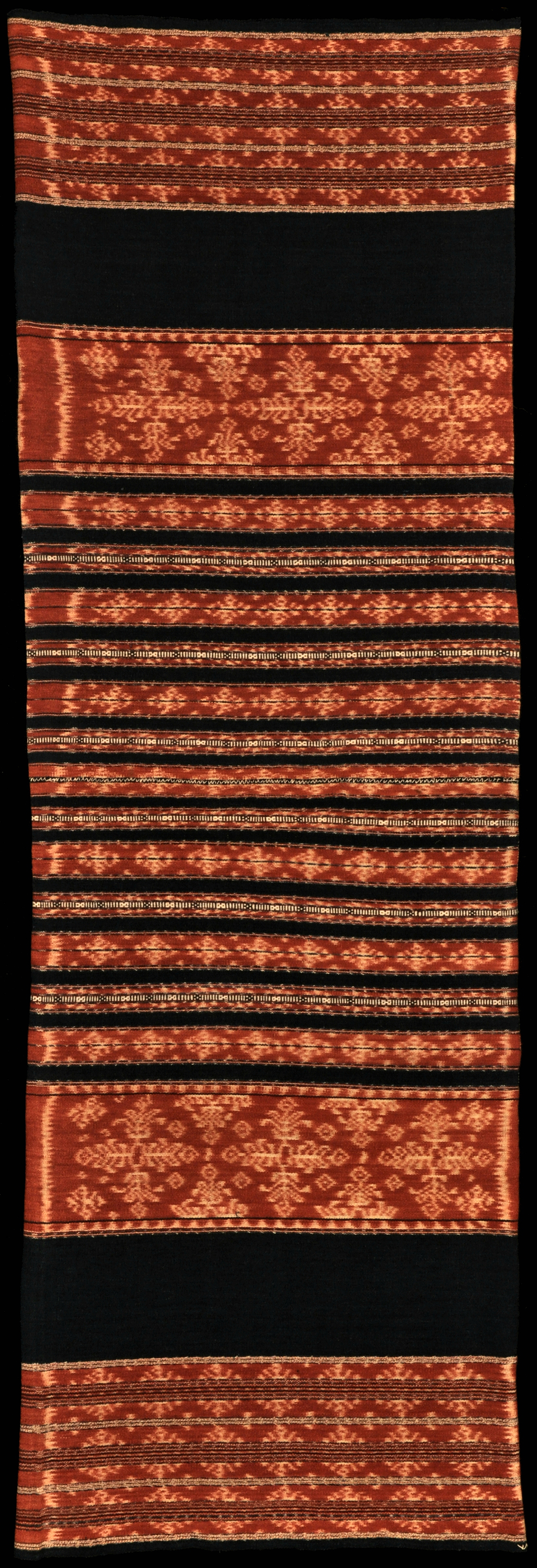| |
 mouse over to magnify mouse over to magnify
| | | | 026 Savu Group, Savu
Ei (sarong)
| | Locale: | Hubi Ae weaver | | Period: | 1930-1945 | | Panels: | 2 | | Design: | Ei raja, with motif derived from kobe motif: fern-like motifs, and small flower or star-like motifs standing out in a cream-like ecru on morinda red, alternated with dark indigo bands called roa (the narrow ones) and medi ae (the wide ones). On the reverse side the sarong is marked with a little zigzag in white thread, bunga wurumada, signalling completion of the ceremony required after the weaving and before sewing the cloth into a sarong. | | Size: | 57 x 172 cm (22.4 x 67.7 in) | | Weight: | 745 g (380 g/m2) | | Yarn: | Cotton, hand-spun, coarse | | Comment: | Fairly heavy cloth, about 150% of average for Savu. Tight execution of patterns. Yarn also somewhat coarser than average, which might suggest Raijua manufacture, though patterning is Savunese. Genevieve Duggan: 'Did a Hubi Iki weaver try to copy or do something for herself? If so it must have been kept in her basket, and cannot have been worn. But why the variation in motif? Not easy to know if we cannot ask weaver herself.' | | Background: | Additional information in chapters on Savu Group and Savu. | | Compare: | 010 136 145 | | Sources: | Similar to ei raja in Duggan, Woven Stories, P. 59 top, but with different motif in the hebe (widest ikat band). Similar to Nusantara, Fig. 103 / Nr. 121 and Khan Majlis Indonesische Textilien, Wege zu Goettern und Ahnen p.169; Gittinger (Splendid Symbols) Fig. 432,433. Also similar to sarong in Duggan Textiles of Savu, fig. 15. Kobe motif in same work, Fig. 21. Similar sarong in Yoshimoto, Ikat, Fig. 149. Similar piece in Boston Museum of Fine Arts, No. 27.467. | | |
 ©Peter ten Hoopen, 2025
All rights reserved.
|
|


